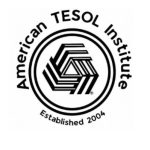In the quest for effective and engaging English Language Teaching (ELT), science emerges as a dynamic and captivating avenue. It transcends mere subject matter, offering a multi-faceted approach that sparks curiosity, fosters critical thinking, and provides a real-world context for language acquisition. Let’s delve into the transformative power of science in ELT and discover how it can inspire and empower learners.
Science: A Catalyst for Language Learning
Science, with its emphasis on observation, experimentation, and discovery, aligns seamlessly with the principles of Content and Language Integrated Learning (CLIL). By integrating science content into language lessons, educators create a meaningful and relevant context for language acquisition. Students not only learn scientific concepts but also develop the language skills necessary to communicate and understand those concepts.
Benefits of Teaching Science to Language Learners:
-
Enhanced Engagement: Science sparks curiosity and a sense of wonder, captivating learners and motivating them to explore the world around them. Hands-on experiments, interactive simulations, and real-world applications bring abstract concepts to life, fostering active participation and deeper understanding.
-
Vocabulary Acquisition: Science introduces a rich vocabulary of specialized terms and concepts, expanding learners’ lexical repertoire and enhancing their ability to communicate effectively in scientific contexts.
-
Critical Thinking and Problem-Solving: Scientific inquiry encourages students to ask questions, analyze data, and draw evidence-based conclusions. These skills are essential for language learning and academic success across disciplines.
-
Cross-Cultural Connections: Science transcends cultural boundaries, offering a common ground for learners from diverse backgrounds. Exploring scientific phenomena and discoveries can foster intercultural understanding and appreciation.
Strategies for Effective Science Integration in ELT
- Hands-On Experiments: Conduct simple experiments that demonstrate scientific principles and engage multiple senses.
- Visual Aids and Demonstrations: Utilize diagrams, charts, and videos to illustrate scientific concepts and processes.
- Interactive Simulations: Employ online simulations and virtual labs to provide immersive learning experiences.
- Real-World Connections: Relate scientific concepts to everyday life, current events, and global challenges.
- Collaborative Projects: Encourage teamwork and communication through group projects that involve research, experimentation, and presentation.
Conclusion
Incorporating science into ELT is a powerful strategy for igniting curiosity, fostering critical thinking, and creating a meaningful context for language acquisition. By engaging learners in hands-on activities, interactive simulations, and collaborative projects, educators can empower students to explore the wonders of science while developing essential language skills.
Remember:
- Tailor scientific content to students’ language proficiency levels and prior knowledge.
- Provide clear explanations and visual aids to support comprehension.
- Encourage questions, discussions, and active participation.
- Celebrate successes and create a positive learning environment where students feel comfortable taking risks and exploring new ideas.
Resources:
- National Science Teaching Association (NSTA): https://www.nsta.org/
- Science Buddies: https://www.sciencebuddies.org/
- Exploratorium: The Museum of Science, Art and Human Perception: https://www.exploratorium.edu/
By embracing the power of science, educators can transform the ELT classroom into a laboratory of discovery, where language and knowledge intertwine to create a truly enriching learning experience.


